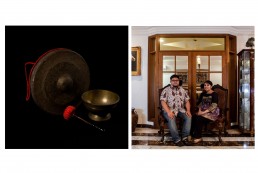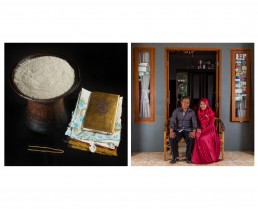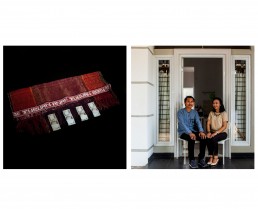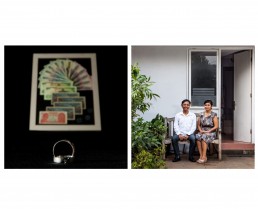Measuring A Readiness Through Symbols
MEASURING A READINESS THROUGH SYMBOLS
Seto Wardhana, The Jakarta post
“A marriage is not only to unite two different personalities, but it also serves as a medium that unites parents from two families plus their siblings and relatives,” says the Indonesian father of anthropology Koentjaraningrat about the definition of a marriage. Home to at least 1,340 ethnicities, Indonesia has hundreds, or maybe thousands, of wedding tradition. Every ethnic group sets its unique conditions that need to be fulfilled by a groom-to-be in order to be able to propose his sweetheart. Yet, these different kinds of requirements lead to a single purpose; which is to measure the readiness of any groom-to-be to establish a new family.
One of those conditions is a mahr, or a gift presented by a family of a groom or a groom himself to the bride’s family or the other way around prior to a wedding vow. As Indonesians consider a marriage as something sacred and a part of family’s affair, a long-held tradition plays an important role in defining the form of a mahr. The real value of a mahr varies from one ethnicity to the other. Even, in some cases the symbolic meaning of a mahr is more important than its monetary value.
In a Batak wedding, for instance, a mahr could come in the forms of a Batak traditional cloth of Ulos, either a cow or a pig and vegetables, in addition to a sum of money in an even number, all to symbolically represent humans’ primary needs of clothing, food and shelter. The mahr is to show nothing but a readiness of the groom-to-be to build a new family.
While in a Dayak tradition, a mahr comes in the form of a gong, a percussion instrument, symbolizing a new journey in the life of a newly-wed couple. In Betawi wedding tradition, a copper steamer filled with rice and other staples serves as a mahr which symbolizes the readiness of the groom-to-be to feed a new family he is about to build. Within a tradition of an ancient society, a mahr served as compensation to a family who lost one of its bread-winners as he moved out to join his new family. I addition to its economic value, a mahr also defines a social status, and becomes a symbol to unite two big families and to establish a new family.
“So, it is not about the real value or the material itself, instead, it is about a symbol and a prestige,” says a University of Indonesia anthropologist Irwan Hindayana. Up to now, a mahr has become a main symbol in every wedding ceremony in Indonesia. Like local traditions and religions, the meaning and the value of a mahr has continued to evolve and change.
In Jakarta, for example, a traditional mahr has gradually transformed to its modern form. Yet, a mahr has kept its same meaning and social value, which is used to propose a child of a family in order to build a new family.




